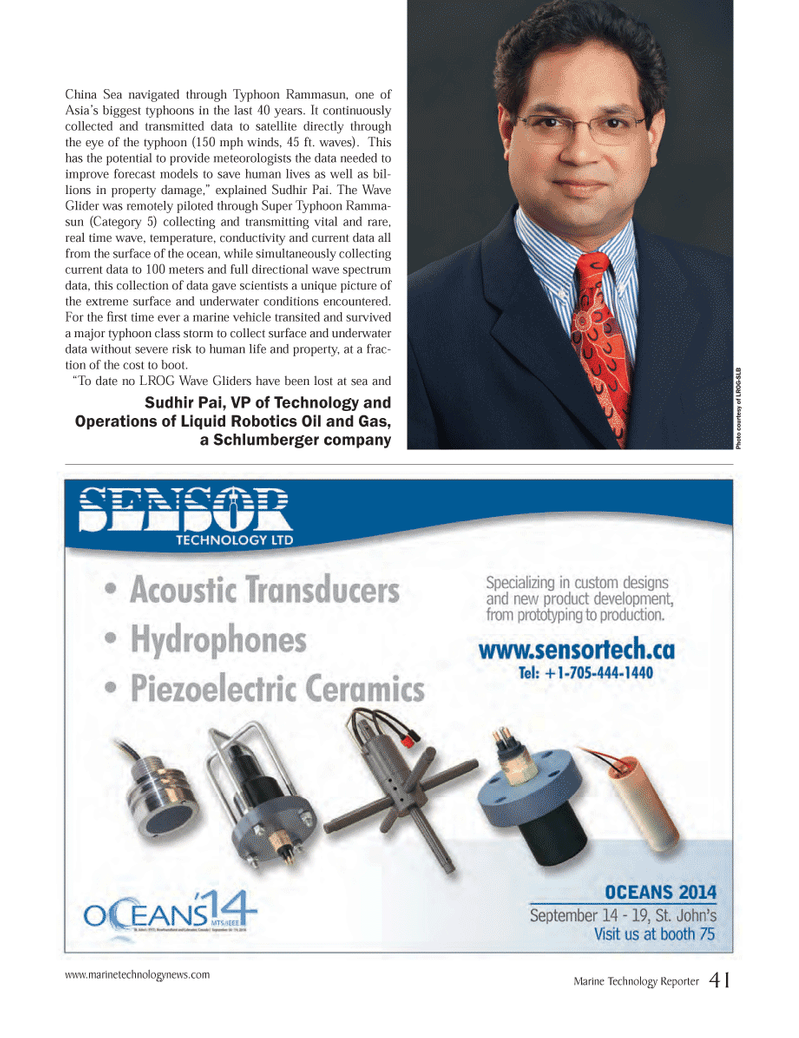
Page 41: of Marine Technology Magazine (September 2014)
Ocean Observation: Gliders, Buoys & Sub-Surface Networks
Read this page in Pdf, Flash or Html5 edition of September 2014 Marine Technology Magazine
China Sea navigated through Typhoon Rammasun, one of
Asia’s biggest typhoons in the last 40 years. It continuously collected and transmitted data to satellite directly through the eye of the typhoon (150 mph winds, 45 ft. waves). This has the potential to provide meteorologists the data needed to improve forecast models to save human lives as well as bil- lions in property damage,” explained Sudhir Pai. The Wave
Glider was remotely piloted through Super Typhoon Ramma- sun (Category 5) collecting and transmitting vital and rare, real time wave, temperature, conductivity and current data all from the surface of the ocean, while simultaneously collecting current data to 100 meters and full directional wave spectrum data, this collection of data gave scientists a unique picture of the extreme surface and underwater conditions encountered.
For the fi rst time ever a marine vehicle transited and survived a major typhoon class storm to collect surface and underwater data without severe risk to human life and property, at a frac- tion of the cost to boot. “To date no LROG Wave Gliders have been lost at sea and
Sudhir Pai, VP of Technology and
Operations of Liquid Robotics Oil and Gas, a Schlumberger company
Photo cour tesy of LR
OG-SLB www.marinetechnologynews.com
Marine Technology Reporter 41
MTR #7 (34-49).indd 41 8/27/2014 9:38:39 AM

 40
40

 42
42
